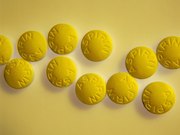Extended prophylaxis with aspirin no different from rivaroxaban for preventing venous thromboembolism
WEDNESDAY, Feb. 21, 2018 (HealthDay News) — For patients who have undergone total hip or knee arthroplasty, extended prophylaxis with aspirin does not differ significantly from rivaroxaban for venous thromboembolism prevention, according to a study published in the Feb. 21 issue of the New England Journal of Medicine.
David R. Anderson, M.D., from Dalhousie University in Halifax, Canada, and colleagues conducted a multicenter randomized trial involving patients who were undergoing total hip (1,804 patients) or knee (1,620 patients) arthroplasty. All patients received oral rivaroxaban until postoperative day 5 and were then randomized to continue rivaroxaban or switch to aspirin for nine or 30 days after total knee or total hip arthroplasty, respectively. Patients were followed for 90 days.
The researchers found that venous thromboembolism occurred in 0.64 and 0.7 percent of patients in the aspirin and rivaroxaban groups, respectively (difference, 0.06 percentage points; 95 percent confidence interval [CI], −0.55 to 0.66; P < 0.001 for noninferiority and P = 0.84 for superiority). Major bleeding complications occurred in 0.47 and 0.29 percent of patients in the aspirin and rivaroxaban groups, respectively (difference, 0.18 percentage points; 95 percent CI, −0.65 to 0.29; P = 0.42). Clinically important bleeding occurred in 1.29 and 0.99 percent of patients in the aspirin and rivaroxaban groups, respectively (difference, 0.3 percentage points; 95 percent CI, −1.07 to 0.47; P = 0.43).
“Extended prophylaxis with aspirin was not significantly different from rivaroxaban in the prevention of symptomatic venous thromboembolism,” the authors write.
Several authors disclosed financial ties to the pharmaceutical industry.
Copyright © 2018 HealthDay. All rights reserved.








